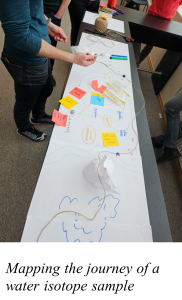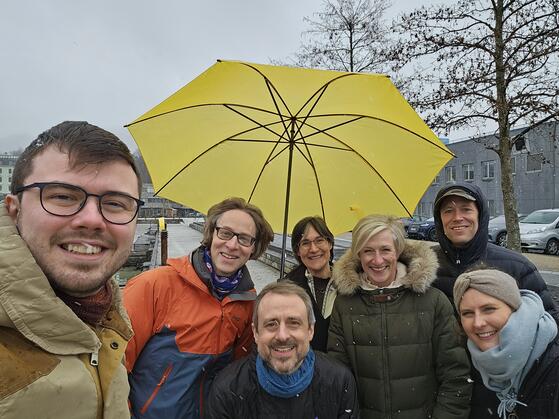
An important part of the ISOSCAN project is collaboratively designing a citizen science framework in northern Scandinavia to collect high-resolution stable water isotope data to improve hydrological forecasting. It may seem easy to involve hikers by simply distributing sampling kits and instructions. But in order to become a well-functioning and lasting citizen science arrangement, it needs to bring value to scientists, citizens and all other stakeholders involved. For this purpose, Janne Liburd and Kristof Tomej from the University of Southern Denmark use tourism co-design. Tourism co-design is a creative approach that seeks to use productively the complexities that arise when people from different backgrounds meet and interact.
As a first step, Janne and Kristof facilitated a co-design workshop with the core ISOSCAN team in Bergen to identify relations between the work packages, critical moments, and possible scenarios. The scientists were challenged to create the journey of a stable water isotope from the ocean to the snowpack to a collected sample to the university lab and beyond. The joint visualization of the isotope journey emerged in a colourful map, which uncovered many possible journeys. It also demonstrated how each of the team members, and other stakeholders, relate differently to a snow or water sample. It also revealed how value creation happens at many different levels e.g. school classes, local residents, cruise tourists, sail & ski tourists, which should be appreciated and communicated accordingly. Next, we will co-design with local nature and outdoor organisations, tourism businesses and potential citizen scientists in Norway and Sweden, to expand our shared understanding and move closer to a testable citizen science model.

